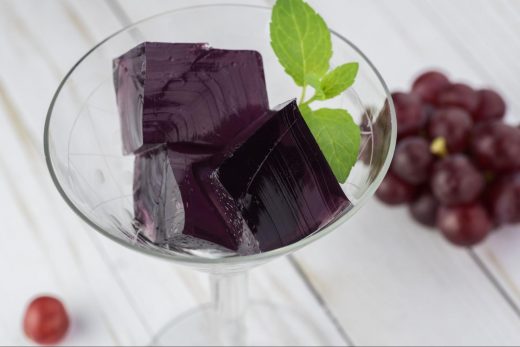
There are ingredients that everyone loves, and there are ingredients that trigger such strong aversion, you wonder if two people are even tasting the same thing. There are also foods that fall in and out of favor over the years. We might raise our eyebrows at fine-dining menus of the 1950s. Likewise, restaurateurs of the past might’ve been repulsed by some of the foods we dine on today.
This edition of Weekly Bites considers the history and cultural context of three polarizing ingredients. From spicy chiles to jiggling jello and the now-beloved-previously-hated lobster, understanding the history of these ingredients can help chefs understand their places in menus today.
Let’s dig in!
Can you take the heat?
While some can’t stand spicy food, others embrace it as a way of life. The chile pepper is the source of many of our most beloved spicy foods. This NY Times article gives an in-depth history of where the chile plant originated from, how it’s been used in food, and what we have yet to discover about this versatile fruit.
Humans first domesticated chiles (yes, it’s chile, not chili) in what is now Mexico. After colonization, it bounced back and forth between colonized countries, back to Europe, then spread to other colonized countries. These trade routes explain why the chile is so predominant in Asian and Southwest Asian cuisines, where the ingredient isn’t indigenous.
Although chiles were first cultivated in the Americas, the desirability of spicy foods didn’t enter American mainstream culture until the 1980s and ‘90s. Since then, a robust culture of vinegary hot sauces (like Huy Fong Foods Sriracha) and pepper eating competitions has flourished.
Why do we love heat so much? If you’ve ever felt all of your sinuses emptying, tears streaming down your face as you bit into a spicy meal, then you might’ve experienced a feeling of bliss afterward. There’s also the machismo aspect of it, where being “capable” of eating the spiciest foods is falsely tied to masculinity.
The truth is, chiles have so much more to offer than blissful, all-consuming heat. Different varieties of peppers have distinct flavors, ranging from smoky to fruity to citrusy. The heat itself can be dialed down by discarding the pith of the pepper, which is actually responsible for the majority of the heat (not the seeds, as is popular belief). Peppers are also chock-full of vitamins C (3x more than oranges), A, and E.
Oh, it shivers!
Jiggly jellies and jello.
It’s likely that those words elicited a strong reaction out of you.
Were you repulsed? Intrigued? Excited?
According to an NY Times article by Ligaya Mishan, gelatin products like jellies and jello may be coming back.
We’re talking about the kind of elaborate 50s gelatin creations that included foods suspended in clear gelatin, intricate arrangements of different colored and flavored jello, and molds. So many jello molds.
To our modern sensibilities, it seems impossible to imagine that these wiggly creations were ever an integral part of our cuisine. According to the NY Times article, however, humanity tends to embrace gelatin foods during times of uncertainty. Mishan writes, “If we now embrace the jiggle, is it because we’ve become accustomed to precarity as a way of life, with the threat of pandemic barely contained and the global economy just a wobble away from recession?”
Jello is a distinctly American food, and not one easily understood by others. Jello molds used to be given to immigrants as they went through Ellis Island. One teen fleeing famine in Ukraine in 1923 reacted in disgust to the food, proclaiming, “Oh, it shivers!”
Are gelatin-based dishes coming back in vogue? And if they are, what shivering foods will we create next?
No more lobster, sorry
Sorry to be the bearer of bad news, but lobster is no longer a sustainable food choice, according to the Seafood Watch.
Lobster is a delicious delicacy; an ingredient that has graced the menus of virtually every fine-dining restaurant. Nevertheless, our relationship with lobster hasn’t always been positive. In the 19th century, lobsters were as plentiful as… Well, it’s not easy to think of an example of an abundant shellfish in this day and age. Because it was so plentiful, lobster was considered to be a common food. It was even served to prisoners, indicating that people didn’t think it was appropriate for fine dining.
While lobster used to be considered a sustainable choice, the Seafood Watch — an advisory group that ascertains bioavailability and environmental impact of harvesting seafood — is now saying we should stop buying and eating lobster.
Lobster is still relatively plentiful, but the problem is that fishing for lobsters is dangerous for North Atlantic right whales, which are a critically endangered species. The situation is so dire that this particular whale population has dipped to the low hundreds, highlighting the urgency in keeping them safe.
With lobsters out, what will the new fine-dining staple be?


